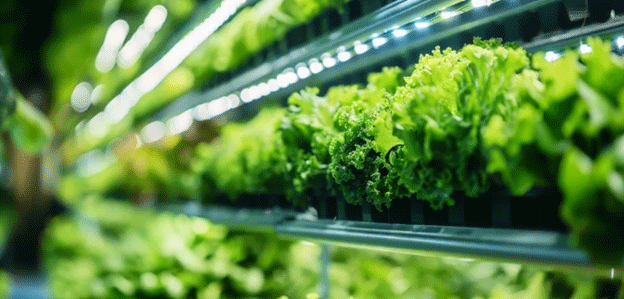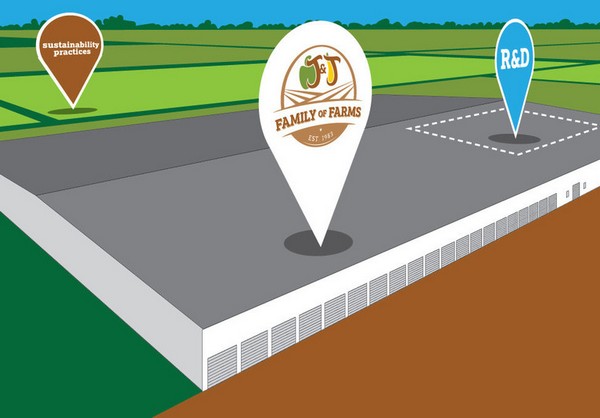By 2050, the world will need to produce up to 70% more food to meet demand, driven by population growth and urbanization. Vertical farming—growing crops in stacked indoor systems—is increasingly viewed as part of the solution. This method enables intensive, efficient production of vegetables and fruits, particularly in urban centers, deserts, and cold climates where traditional farming is unfeasible. However, high energy requirements make it costly and challenging to scale.
A recent study published in Frontiers in Science offers new insights into how we can tackle these challenges. Led by Wageningen University researchers, the study examines how manipulating light and other environmental variables could reduce energy costs while maintaining high productivity.
Rethinking Constant Conditions in Vertical Farms
Traditional vertical farms maintain constant conditions for lighting, temperature, and CO₂, but this consumes large amounts of electricity, which is expensive and contributes to environmental concerns. The study’s authors propose that instead of constant conditions, vertical farms could use a dynamic, sensor-supported approach to adjust light intensity, airflow, and temperature throughout the day according to the plants’ needs.
Using data from plant physiology, the study suggests that plants benefit from environments that fluctuate in tune with their natural growth rhythms. Senior author Prof. Leo Marcelis of Wageningen University notes, “Plants have diurnal and developmental cycles that require their environment to change regularly for optimal growth. By understanding these cycles, we can tailor environments dynamically to save energy without sacrificing yield.”
Lighting as the Key to Efficiency
Lighting is a particularly energy-intensive component of vertical farming. All plants require light for photosynthesis, but not all wavelengths and intensities are equally beneficial at all stages of growth. According to the research, adapting light intensity in response to plants’ needs could reduce costs without affecting productivity. In fact, their optimization model, which adjusts light based on real-time data, decreased electricity costs by 12% while maintaining consistent photosynthesis rates in the plants.
The researchers also tested these methods on crops like spinach, common in vertical farming systems. They found that irregular light patterns did not negatively impact growth, indicating that such methods could be implemented on a large scale to maintain yield and quality while conserving energy.
Beyond Lighting: Dynamic Control of CO₂ and Airflow
While lighting is a substantial factor, other environmental conditions play key roles. Adjusting CO₂ levels, air circulation, and temperature in response to real-time plant needs could further enhance energy efficiency. However, as study lead Dr. Elias Kaiser highlights, many of these strategies still need to be tested on a larger scale to determine their viability for entire crop stands, not just individual plants.
Wageningen’s study points out the necessity of specialized sensors and automated systems that continuously monitor plant and environmental variables. In addition, plant breeding for vertical farming will become increasingly important, as cultivars specifically suited to controlled environments—emphasizing nutrient density and flavor over hardiness—are expected to meet the nutritional needs of local populations more efficiently.
The study from Wageningen University illustrates a promising future for vertical farming, demonstrating how dynamic environmental controls could make this method more affordable and sustainable. By adopting flexible, sensor-driven adjustments to lighting, CO₂, and airflow, vertical farms can potentially reduce energy consumption and increase profitability. This shift is essential if vertical farming is to contribute to global food security in a cost-effective, scalable way.
As we strive to feed a growing population, these insights into dynamic farming underscore the importance of both technological innovation and tailored crop management. With further research, vertical farming could evolve from a niche practice to a vital component of our agricultural landscape, ensuring food security in a resource-limited future.












